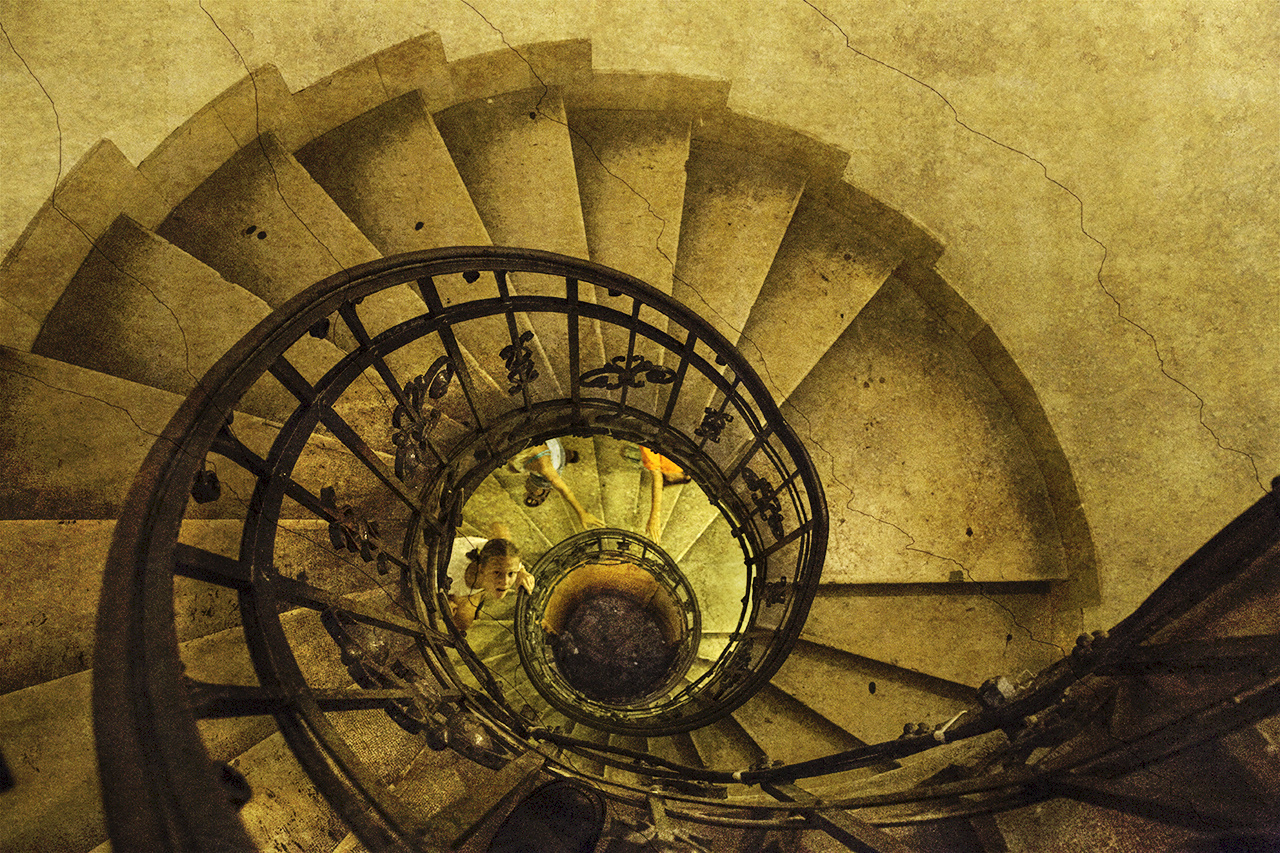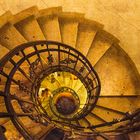BudaPest.- Catedral de Budapest.- Escalera de caracol - Basílica de San Esteban / Budapest Cathedral
-- -----------------------------------------
Textures from Lenabem-Anna (www.flickr.com/photos/lenabem-anna/).
------------------------------------------------------------------------
de / from Wikipedia:
La Basílica San Esteban (en húngaro: Szent István-bazilika) es un edificio religioso de culto católico, bajo el patrocinio del san Esteban I de Hungría, situada en la ciudad de Budapest, capital de Hungría. Es la catedral de Budapest y tal como su nombre indica, en 1931 el Papa Pío XI le otorgó el título de "basílica menor".
Junto con el Parlamento, son los dos edificios más altos de la ciudad de Budapest con 96 m, además del edificio religioso más grande del país, con capacidad para 8.500 personas.
Se comenzó a construir sobre el año 1851, concluyéndose 54 años después, en el año 1905, debido a que la cúpula tuvo que ser demolida en 1868. Fue consagrada el mismo año de su finalización.
Por debajo del majestuoso edificio, cuya fachada principal mira hacia el cercano río Danubio, se tuvo que construir una cimentación de tres niveles, casi tan grande como la propia iglesia.
Construido bajo estilo neoclásico con planta de cruz griega, de 87 m de largo por 55 m de ancho. La fachada principal se completa con dos torres gemelas a modo de campanarios, en su torre derecha se encuentra la campana más pesada (con nueve toneladas de peso) y grande de Hungría, la anterior, de 8 toneladas, fue fundida durante la II Guerra Mundial.
Desde la cúpula se obtienen unas impresionantes vistas panorámicas de Budapest, se accede a lo más alto por ascensores o por 364 escalones.
En la capilla ubicada por detrás del santuario, se conserva la reliquia más importante de la cristiandad húngara: la diestra momificada rey Esteban I de Hungría, primer rey de Hungría y fundador de la iglesia de Hungría. De entre las obras de arte de la iglesia mencionaremos las estatuas de Alajos Stróbl y la pintura de Gyula Benczúr: San Esteban pide la protección de la Virgen para el país.
Gracias a su maravillosa acústica, en su interior se pueden disfrutar conciertos de órgano. El programa recoge las más hermosas obras de Mozart, Liszt, Schubert, Vivaldi. Todos los viernes a las 20:00 horas. Kolos Kováts - cantante de ópera, András Virágh - organista, Eleonóra Krusic - flautista
para más información, visite www.bazilika.biz/
-----------------------------------------------------------------------------
St. Stephen's Basilica (Hungarian: Szent István-bazilika, Hungarian pronunciation: [sent ˈiʃtvaːn ˈbɒzilikɒ]) is a Roman Catholic basilica in Budapest, Hungary. It is named in honour of Stephen, the first King of Hungary (c 975–1038), whose right hand is housed in the reliquary. It was the sixth largest church building in Hungary before 1920. Today, it is the third largest church building in present-day Hungary.
The church is named after Saint Stephen I of Hungary, the first King of Hungary (c. 975–1038), whose incorruptible right hand is housed in the reliquary.
This is the most important church building in Hungary, one of the most significant tourist attractions and the third highest building in Hungary.
Equal with the Hungarian Parliament Building, it is one of the two tallest buildings in Budapest at 96 metres (315 ft) - this equation symbolises that worldly and spiritual thinking have the same importance. According to current regulations there cannot be taller building in Budapest than 96 metres (315 ft).[1] It has a width of 55 metres (180 ft), and length of 87.4 metres (287 ft). It was completed in 1905 after 54 years of construction, according to the plans of Miklós Ybl, and was completed by József Kauser. Much of this delay can be attributed to the collapse of the dome in 1868 which required complete demolition of the completed works and rebuilding from the ground up.
The architectural style is Neo-Classical; it has a Greek cross ground plan. The façade is anchored by two large bell towers. In the southern tower is Hungary's biggest bell, weighing over 9 tonnes (8.9 long tons; 9.9 short tons). Its predecessor had a weight of almost 8 tonnes (7.9 long tons; 8.8 short tons), but it was used for military purposes during World War II. Visitors may access the dome by elevators or by climbing 364 stairs for a 360° view overlooking Budapest.
The basilica has six bells: one in the south tower and five in the north tower.
Great St. Stephan bell:
The largest bell in Hungary. Located in the south tower, it weighs 9250 kg and has a diameter of 240 cm. It was made by the Perner bell foundry in Passau, Germany in 1990.
Blessed Virgin Mary bell:
The oldest bell in the church, founded by Ferenc Walser in 1863 in [Pest]. It weighs 3100 kg and has a diameter of 178,5 cm.
St. Henry II. bell:
It weighs 2150 kg and has a diameter of 150 cm. Founded in Passau in 1993.
Blessed Gizella bell:
It weighs 1250 kg and has a diameter of 117,8 cm. Founded in Passau in 1993.
Saint Emeric bell:
It weighs 750 kg. Founded in Passau in 1993.
Saint Erzsébet (Elizabeth) from the House of Árpád bell:
It weighs 500 kg. Founded in Passau in 1993.
The great bell was consecrated on 20 August 1990, on the day of St. Stephan. The four smaller bells were consecrated three years later on the same day.
for more information: www.bazilika.biz/




Natxus 18/10/2014 11:02
Gracias por la visita y el comentario.Un saludo.
Chaito Bahamonde 13/10/2014 10:19
original con el turista asomadosaludos, chaito